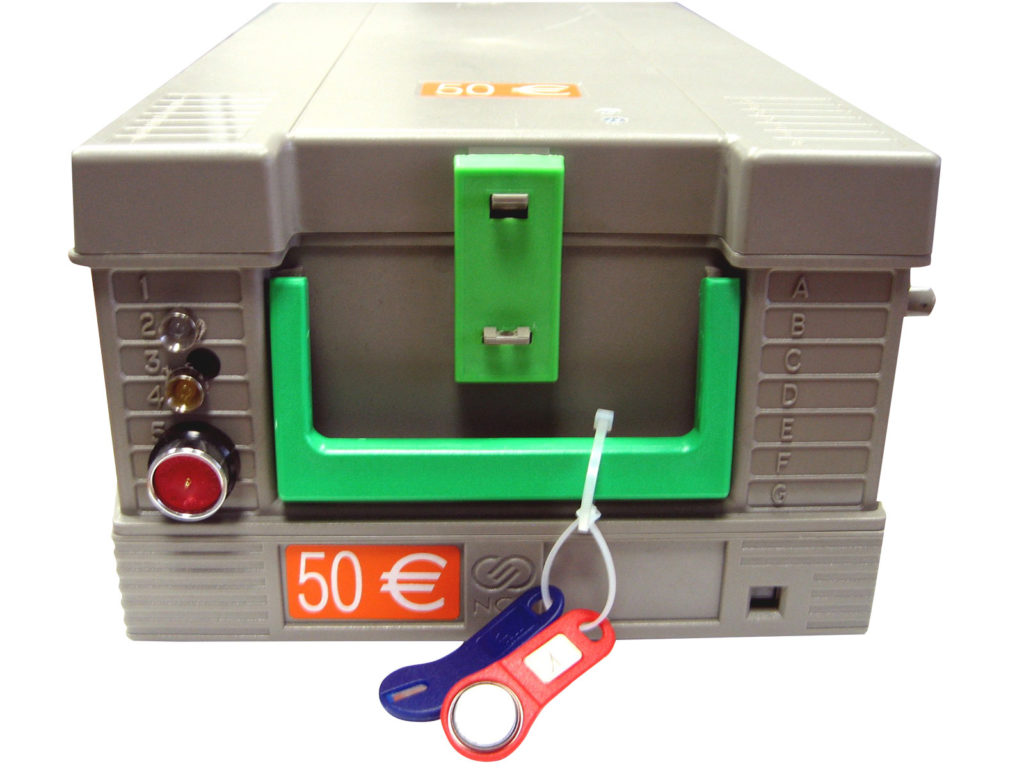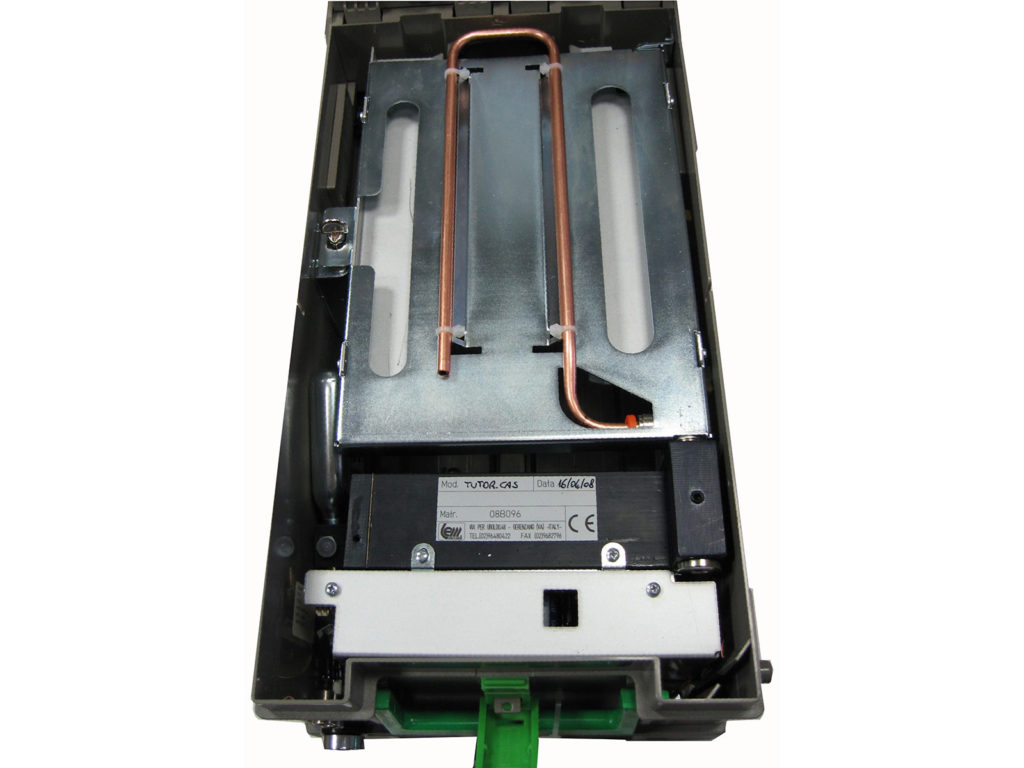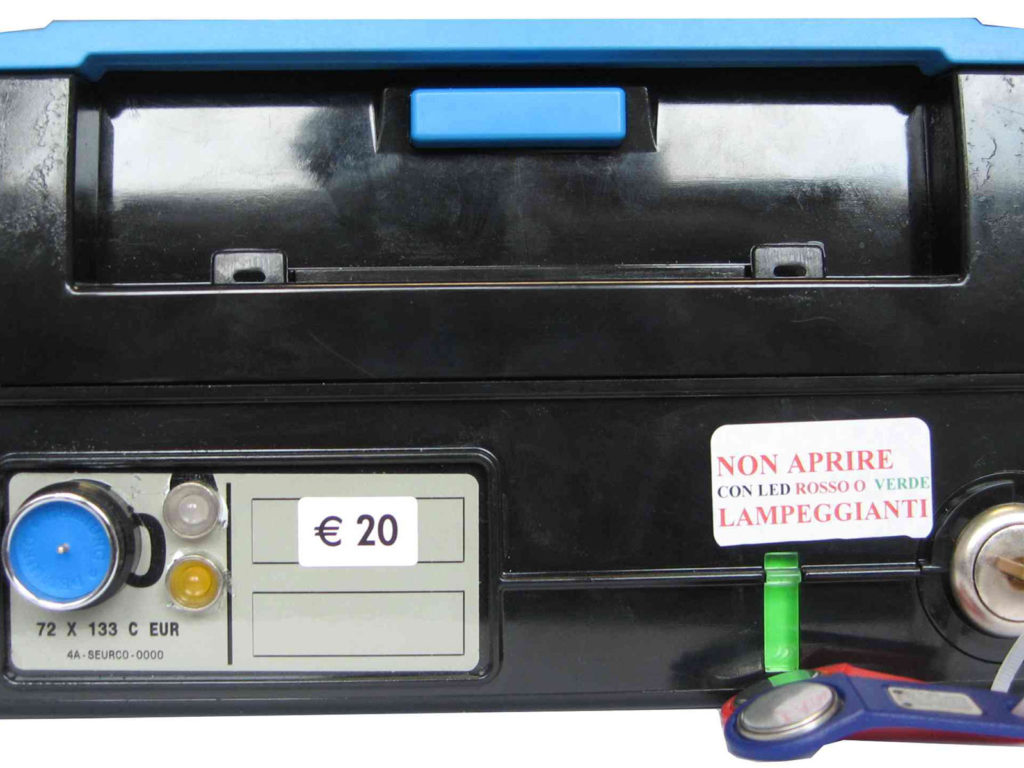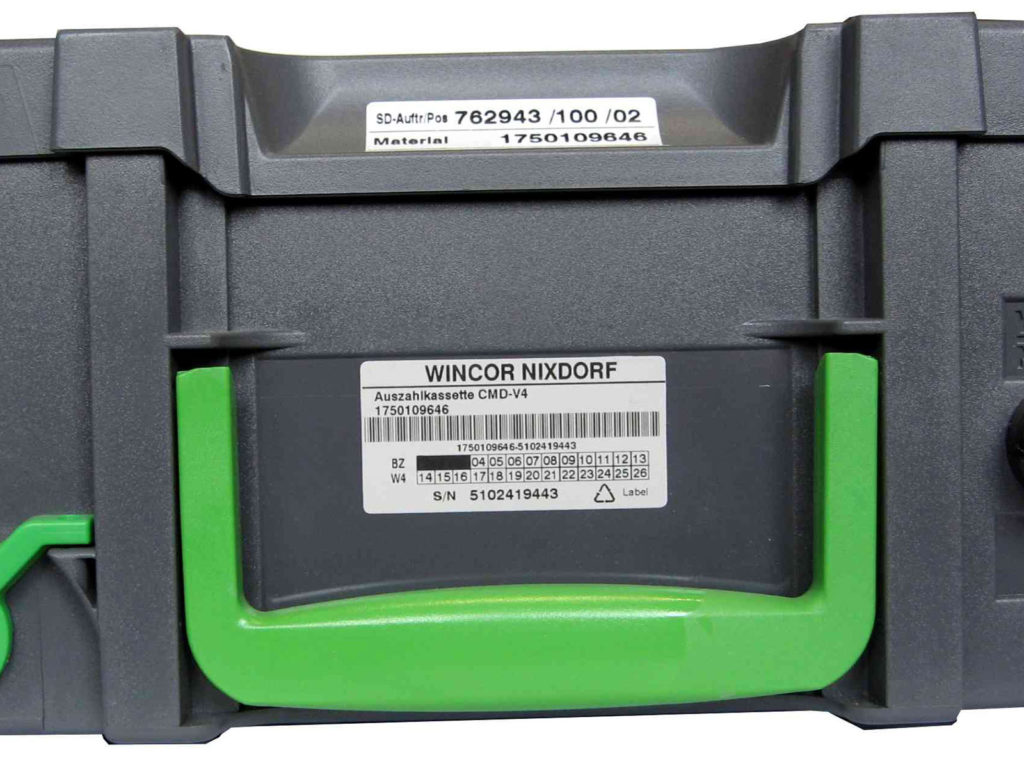The LEM banknote ink staining system for installation inside cassettes for ATMs has been designed to meet specific security, logistics and installation requirements:
The device, designed to stain banknotes inside ATM cassettes, is equipped with sensors to detect mechanical attacks, thermal attacks and a ram raid on the ATM itself.
It ensures staining even in the event of fraudulent opening of the ATM safe door without the safe doors being physically attacked.
Ink staining system for inside the ATM cassette
INK STAINING SYSTEM FOR INSIDE THE ATM CASSETTE
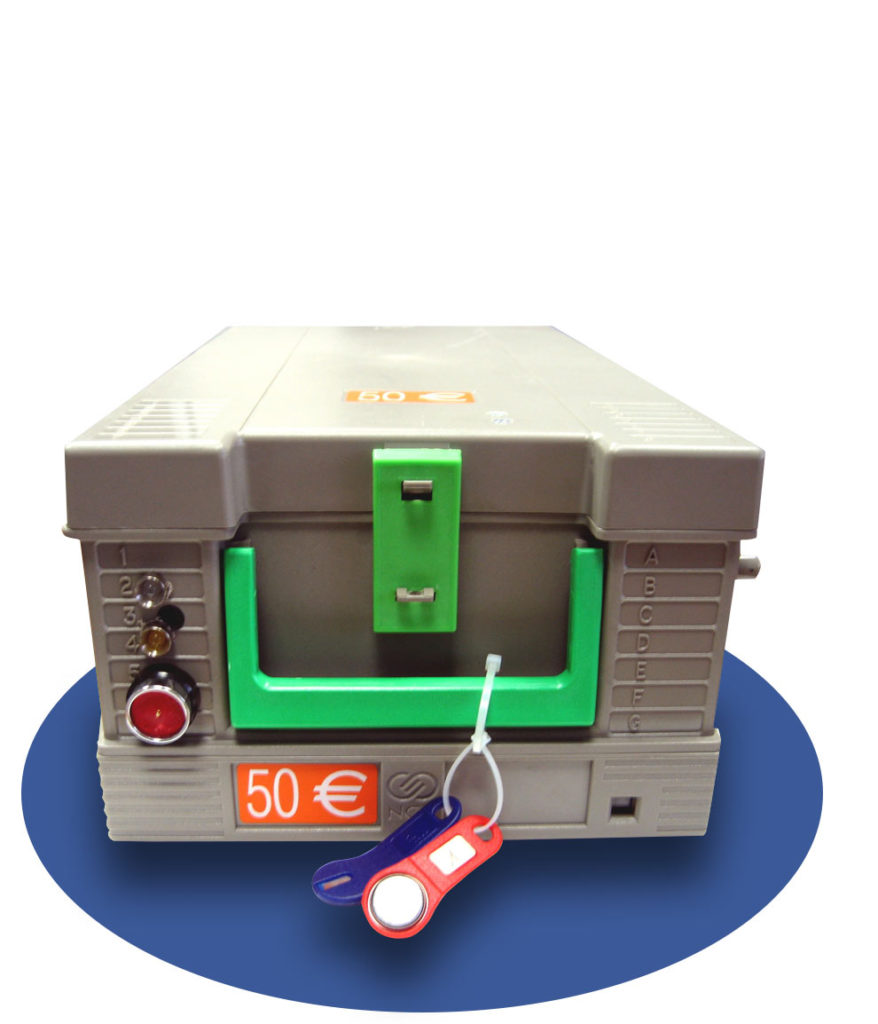
Ink staining also takes place when the cassette is not protected if the cassette cover is opened or the cassette is broken into.
To ensure proper staining of the banknotes, the ink distribution coil is mounted with a mechanical protection not immediately accessible when the cassette cover is opened.
Activation and deactivation of the device takes place in complete safety through the use of “Dallas” electronic keys with the recording of all the events associated with their use.
Cassette management can be carried out in three ways:
- Externalised ATM management mode: the cassette sensors are activated in two different phases. The first activation with a specific Dallas key is implemented once the cassette is loaded and closed, typically in the “counting room”. This way the cassette can be transported while protected against theft, attack or the fraudulent opening of the cover. During this phase, the sensitivity to impacts is reduced and the position sensors are not activated. At the destination, with the cassettes positioned inside the ATM, the second activation can be performed with another Dallas key. The sensors are activated, sensitivity of the specific section detecting impact increases and the position sensors activate. The device is deactivated by placing the same key back on the dedicated sensor; partial deactivation is performed by using the second key before removing the cassettes from the ATM; total deactivation using the first key once the cassette is in the “counting room”.
- Internal management: The cassette sensors are activated in one stage. All the sensors are activated with a single Dallas key when the cassette is inside the ATM. Using the same key and before removing the cassette from the ATM, all the sensors are deactivated when the key is put back on the reader.
- Internal management with cassette loading taking place in a protected zone: the cassette sensors are activated in two stages. The first activation with a specific Dallas key is implemented once the cassette is loaded and closed, typically in a “protected zone”. This way, the cassette can be transported while protected against theft, attack or the fraudulent opening of the cover with the addition of a stand-by time limit, activated at the start, within which the cassette must be placed inside the ATM. During this phase, the sensitivity to impacts is reduced and the position sensors are not activated. At the destination, with the cassettes positioned inside the ATM, the second activation can be performed with a another Dallas key. The sensors are all activated, sensitivity of the specific section detecting impact increases, the position sensors activate and the stand-by time limit deactivates. The device is deactivated by placing the same key back on the dedicated sensor; partial deactivation is performed by using the second key before removing the cassettes from the ATM; total deactivation using the first key once the cassette is in “protected zone”.
All the operations are signalled by the designated LEDs and buzzer.
Specific functions have been introduced to prevent unintentional ink staining.
A number of objectives have been reached
- Protection of the ATM against physical attacks using the ink staining system and AntiGas stainer.
- No modification made to the ATM
- Protection of the cassette inside the branch during ATM loading operations.
- Cassette protection during transport without any modification or addition to the racks of the transport vehicle.
The device indicated above is an “open” system allowing it to be updated to accommodate future improvements.
